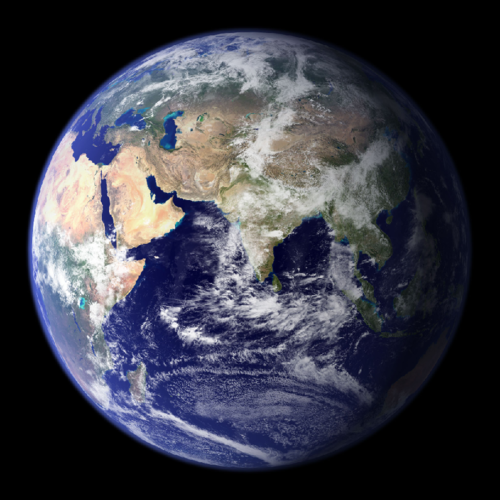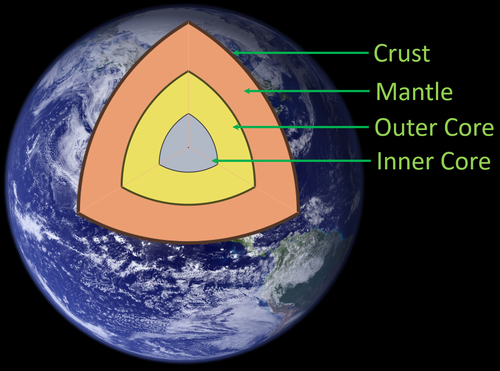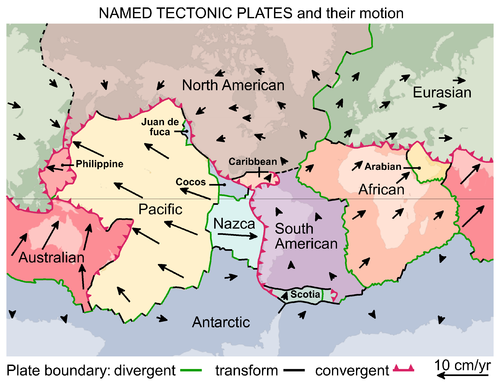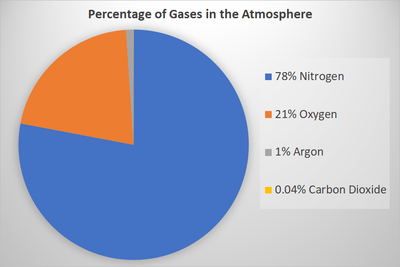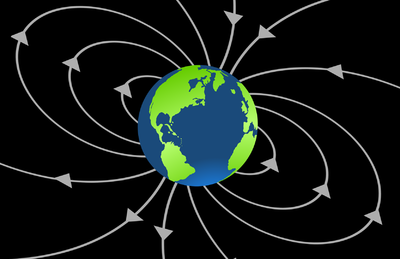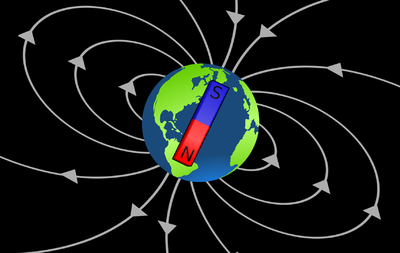Difference between revisions of "Earth"
(→Earth's Magnetic Field) |
(→Key Stage 3) |
||
| Line 63: | Line 63: | ||
: The [[resource]]s humans need to provide power are; [[Crude Oil|crude oil]], [[coal]], [[Natural Gas|natural gas]], [[Nuclear Fuel|nuclear fuel]], [[biofuel]], [[Solar Power|sunlight]], [[Wind Power|wind]], [[Hydroelectric Power|river]]s, [[Tidal Power|tides]], [[Wave Power|waves]] and [[Geothermal Power|geothermal vents]]. | : The [[resource]]s humans need to provide power are; [[Crude Oil|crude oil]], [[coal]], [[Natural Gas|natural gas]], [[Nuclear Fuel|nuclear fuel]], [[biofuel]], [[Solar Power|sunlight]], [[Wind Power|wind]], [[Hydroelectric Power|river]]s, [[Tidal Power|tides]], [[Wave Power|waves]] and [[Geothermal Power|geothermal vents]]. | ||
| + | |||
| + | ===Earth's Magnetic Field=== | ||
| + | : The core of the [[Earth]] spins at a different speed to the rest of the [[planet]] and this causes a [[Magnetic Field|magnetic field]]. | ||
| + | : The [[Earth]]'s [[Magnetic Field|magnetic field]] helps protect the [[planet]] against [[Solar Flare]]s from [[The Sun]]. | ||
| + | {| class="wikitable" | ||
| + | |[[File:MagneticFieldLinesEarth.png|center|400px]] | ||
| + | |[[File:MagneticFieldEarth.png|center|400px]] | ||
| + | |- | ||
| + | | style="height:20px; width:200px; text-align:center;" |This [[diagram]] shows the direction of [[Earth]]'s [[Magnetic Field|magnetic field]]. | ||
| + | | style="height:20px; width:200px; text-align:center;" |The [[Magnetic Field|magnetic field]] of [[Earth]] appears as if there were a giant [[Bar Magnet|bar magnet]] inside the [[Earth]]. The North of [[Earth]] is the [[Poles|South Seeking Pole]] of a [[magnet]]. | ||
| + | |} | ||
| + | |||
| + | ==Key Stage 4== | ||
| + | ===Meaning=== | ||
| + | The [[Earth]] is the third [[planet]] form the [[The Sun]] and the home [[planet]] of the [[Human]] [[species]]. | ||
| + | |||
| + | ===Structure of the Earth=== | ||
| + | {| class="wikitable" | ||
| + | |- | ||
| + | |[[File:EarthStructure.png|center|500px]] | ||
| + | |- | ||
| + | | style="height:20px; width:200px; text-align:center;" |A [[diagram]] showing the layers of the [[Earth]]. | ||
| + | |} | ||
| + | *[[Crust]]: The top layer of the [[Earth]] is called the [[Crust]]. It is made of [[rock]]s but two thirds is covered in a layer of [[water]]. | ||
| + | *[[Mantle]]: The layer under the [[Crust]] is called the [[Mantle]]. It is made of [[rock]] that is under such a high [[pressure]] that it behaves [[Plastic (Property)|plastically]]. | ||
| + | *[[Outer Core]]: The [[Outer Core]] is a [[liquid]] layer below the [[Mantle]]. | ||
| + | *[[Inner Core]]: Underneath the [[Outer Core]] is the [[Inner Core]] at the very centre of [[Earth]]. It is a [[solid]] [[sphere]]. | ||
| + | |||
| + | ====Crust==== | ||
| + | The [[Crust]] is split into several lumps that float on the [[Mantle]]. They are called [[Tectonic Plate]]s. They move around separately and and when the rub against each other this causes [[Earthquake]]s. If one [[Tectonic Plate]] moves on top of another the [[Tectonic Plate]] underneath starts to [[melt]] and [[magma]] rises up to make [[Volcano]]es. | ||
| + | |||
| + | {| class="wikitable" | ||
| + | |- | ||
| + | |[[File:TectonicPlates.png|center|500px]] | ||
| + | |- | ||
| + | | style="height:20px; width:200px; text-align:center;" |A [[diagram]] showing the different [[Tectonic Plate]]s that make the [[Earth]]s [[Crust]]. | ||
| + | |} | ||
| + | |||
| + | ===Composition of the Earth=== | ||
| + | The different layers of [[Earth]] are made of different materials. | ||
| + | *[[Crust]] - The most common chemical elements in the [[Crust]] are [[Oxygen]] (46.6%), [[Silicon]] (27.7%), [[Aluminum]] (8.1%), [[Iron]] (5.0%), [[Calcium]] (3.6%). | ||
| + | *[[Mantle]] - The [[Mantle]] is mostly made of [[Silicate]] [[rock]]s. | ||
| + | *[[Outer Core]] - The [[Outer Core]] is mostly made of [[liquid]] [[Iron]] and [[Nickle]]. | ||
| + | *[[Inner Core]] - The [[Inner Core]] is mostly made of [[solid]] [[Iron]] and [[Nickle]]. | ||
| + | |||
| + | ===Earth's Atmosphere=== | ||
| + | {| class="wikitable" | ||
| + | |- | ||
| + | |[[File:AtmosphericGases.png|center|400px]] | ||
| + | |- | ||
| + | | style="height:20px; width:200px; text-align:center;" |A [[Pie Chart]] showing the percentage of different [[gas]]s in the '''Earth's Atmosphere'''. | ||
| + | |} | ||
| + | |||
| + | : The '''Earth's Atmosphere''' has not always had the same proportions of [[gas]]es. 3.9 [[billion]] [[year]]s ago there was no [[Oxygen]] in the [[atmosphere]]. In the last 200 years humans have caused the [[Carbon Dioxide]] in the '''Earth's Atmosphere''' to double. | ||
| + | |||
| + | ===Earth's Resources=== | ||
| + | : '''Earth's''' [[resource]]s are the parts of the [[Earth]] that [[human]]s can use to survive, build technology and provide power. | ||
| + | : The [[resource]]s on Earth are limited. Which means they can run out if we use them all. This means it's important to [[recycling|recycle]] our [[resource]]s. | ||
| + | : The [[resource]]s humans need to survive are; fresh water, food and building materials. For this we need unpolluted rivers, land to grow crops and [[tree]]s and [[rock]]s to build our homes. | ||
| + | : The [[resource]]s humans need to build technology are; [[metal]] [[ore]]s and [[Crude Oil|crude oil]]. | ||
| + | : The [[resource]]s humans need to provide power are; [[Crude Oil|crude oil]], [[coal]], [[Natural Gas|natural gas]], [[Nuclear Fuel|nuclear fuel]], [[biofuel]], [[Solar Power|sunlight]], [[Wind Power|wind]], [[Hydroelectric Power|river]]s, [[Tidal Power|tides]], [[Wave Power|waves]] and [[Geothermal Power|geothermal vents]]. | ||
===Earth's Magnetic Field=== | ===Earth's Magnetic Field=== | ||
Revision as of 20:26, 12 March 2019
Contents
Key Stage 2
Meaning
The Earth is the third planet form The Sun and the home planet of the Human species.
About The Earth
- The Earth is the only planet known to have living creatures on it.
- The Earth has one moon called The Moon.
- The Earth is just the right distance from The Sun for water to be a liquid.
Key Stage 3
Meaning
The Earth is the third planet form the The Sun and the home planet of the Human species.
Structure of the Earth
| A diagram showing the layers of the Earth. |
- Crust: The top layer of the Earth is called the Crust. It is made of rocks but two thirds is covered in a layer of water.
- Mantle: The layer under the Crust is called the Mantle. It is made of rock that is under such a high pressure that it behaves plastically.
- Outer Core: The Outer Core is a liquid layer below the Mantle.
- Inner Core: Underneath the Outer Core is the Inner Core at the very centre of Earth. It is a solid sphere.
Crust
The Crust is split into several lumps that float on the Mantle. They are called Tectonic Plates. They move around separately and and when the rub against each other this causes Earthquakes. If one Tectonic Plate moves on top of another the Tectonic Plate underneath starts to melt and magma rises up to make Volcanoes.
| A diagram showing the different Tectonic Plates that make the Earths Crust. |
Composition of the Earth
The different layers of Earth are made of different materials.
- Crust - The most common chemical elements in the Crust are Oxygen (46.6%), Silicon (27.7%), Aluminum (8.1%), Iron (5.0%), Calcium (3.6%).
- Mantle - The Mantle is mostly made of Silicate rocks.
- Outer Core - The Outer Core is mostly made of liquid Iron and Nickle.
- Inner Core - The Inner Core is mostly made of solid Iron and Nickle.
Earth's Atmosphere
| A Pie Chart showing the percentage of different gass in the Earth's Atmosphere. |
- The Earth's Atmosphere has not always had the same proportions of gases. 3.9 billion years ago there was no Oxygen in the atmosphere. In the last 200 years humans have caused the Carbon Dioxide in the Earth's Atmosphere to double.
Earth's Resources
- Earth's resources are the parts of the Earth that humans can use to survive, build technology and provide power.
- The resources on Earth are limited. Which means they can run out if we use them all. This means it's important to recycle our resources.
- The resources humans need to survive are; fresh water, food and building materials. For this we need unpolluted rivers, land to grow crops and trees and rocks to build our homes.
- The resources humans need to build technology are; metal ores and crude oil.
- The resources humans need to provide power are; crude oil, coal, natural gas, nuclear fuel, biofuel, sunlight, wind, rivers, tides, waves and geothermal vents.
Earth's Magnetic Field
- The core of the Earth spins at a different speed to the rest of the planet and this causes a magnetic field.
- The Earth's magnetic field helps protect the planet against Solar Flares from The Sun.
| This diagram shows the direction of Earth's magnetic field. | The magnetic field of Earth appears as if there were a giant bar magnet inside the Earth. The North of Earth is the South Seeking Pole of a magnet. |
Key Stage 4
Meaning
The Earth is the third planet form the The Sun and the home planet of the Human species.
Structure of the Earth
| A diagram showing the layers of the Earth. |
- Crust: The top layer of the Earth is called the Crust. It is made of rocks but two thirds is covered in a layer of water.
- Mantle: The layer under the Crust is called the Mantle. It is made of rock that is under such a high pressure that it behaves plastically.
- Outer Core: The Outer Core is a liquid layer below the Mantle.
- Inner Core: Underneath the Outer Core is the Inner Core at the very centre of Earth. It is a solid sphere.
Crust
The Crust is split into several lumps that float on the Mantle. They are called Tectonic Plates. They move around separately and and when the rub against each other this causes Earthquakes. If one Tectonic Plate moves on top of another the Tectonic Plate underneath starts to melt and magma rises up to make Volcanoes.
| A diagram showing the different Tectonic Plates that make the Earths Crust. |
Composition of the Earth
The different layers of Earth are made of different materials.
- Crust - The most common chemical elements in the Crust are Oxygen (46.6%), Silicon (27.7%), Aluminum (8.1%), Iron (5.0%), Calcium (3.6%).
- Mantle - The Mantle is mostly made of Silicate rocks.
- Outer Core - The Outer Core is mostly made of liquid Iron and Nickle.
- Inner Core - The Inner Core is mostly made of solid Iron and Nickle.
Earth's Atmosphere
| A Pie Chart showing the percentage of different gass in the Earth's Atmosphere. |
- The Earth's Atmosphere has not always had the same proportions of gases. 3.9 billion years ago there was no Oxygen in the atmosphere. In the last 200 years humans have caused the Carbon Dioxide in the Earth's Atmosphere to double.
Earth's Resources
- Earth's resources are the parts of the Earth that humans can use to survive, build technology and provide power.
- The resources on Earth are limited. Which means they can run out if we use them all. This means it's important to recycle our resources.
- The resources humans need to survive are; fresh water, food and building materials. For this we need unpolluted rivers, land to grow crops and trees and rocks to build our homes.
- The resources humans need to build technology are; metal ores and crude oil.
- The resources humans need to provide power are; crude oil, coal, natural gas, nuclear fuel, biofuel, sunlight, wind, rivers, tides, waves and geothermal vents.
Earth's Magnetic Field
- The core of the Earth spins at a different speed to the rest of the planet and this causes a magnetic field.
- The Earth's magnetic field helps protect the planet against Solar Flares from The Sun.
| This diagram shows the direction of Earth's magnetic field. | The magnetic field of Earth appears as if there were a giant bar magnet inside the Earth. The North of Earth is the South Seeking Pole of a magnet. |
